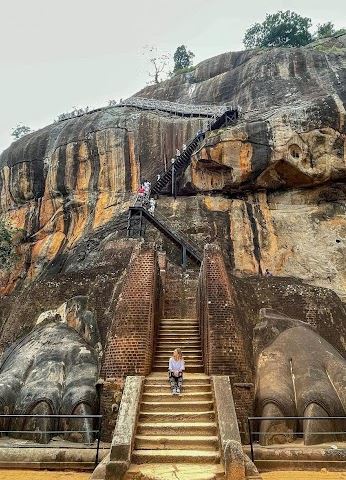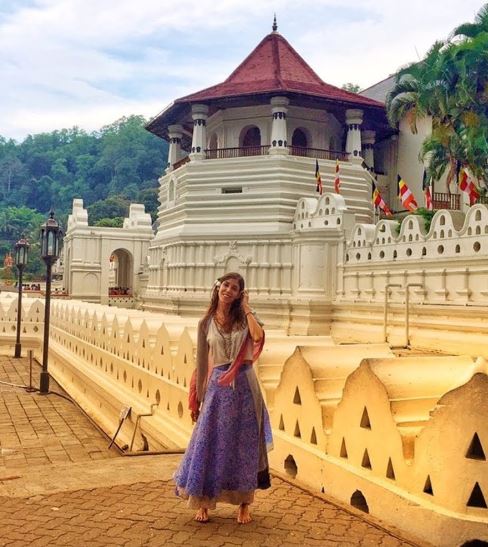Sri Lanka UNESCO Sites



Sri Lanka is home to several UNESCO World Heritage Sites, reflecting the island’s rich cultural history, natural beauty, and diverse heritage. These sites include ancient cities, religious monuments, colonial architecture, and natural wonders. Here’s an overview of Sri Lanka’s UNESCO World Heritage Sites:
Day Tours to Main Cultural Sites
There are many Cultural Heritage sites to visit many Sri Lanka UNESCO Sites. Most famous places are Anuradhapura, Polonnaruwa, Kandy and Sigiriya.
Cultural Sites
1. Ancient City of Polonnaruwa
- Inscription Date: 1982
- Description: Polonnaruwa served as the second capital of Sri Lanka after the decline of Anuradhapura. The city flourished between the 11th and 13th centuries and is known for its well-preserved ruins, including palaces, stupas, and the famous Gal Vihara with its massive Buddha statues carved into granite. The site reflects the grandeur of ancient Sinhalese civilization, with advanced irrigation systems, religious monuments, and royal buildings.
2. Ancient City of Sigiriya
- Inscription Date: 1982
- Description: Sigiriya, also known as Lion Rock, is an ancient rock fortress built in the 5th century by King Kashyapa. The site features a series of gardens, frescoes, and the remnants of a palace perched atop a massive rock. The frescoes of celestial maidens, the Mirror Wall, and the impressive Lion’s Paw entrance are some of the highlights of this unique archaeological site.
3. Sacred City of Anuradhapura
- Inscription Date: 1982
- Description: Anuradhapura was the first capital of Sri Lanka and one of the oldest continuously inhabited cities in the world. The city is renowned for its ancient stupas, monasteries, and the sacred Sri Maha Bodhi tree, which is believed to be a cutting from the original Bodhi tree under which Buddha attained enlightenment. Anuradhapura was a major center of Theravada Buddhism for over a millennium.
4. Sacred City of Kandy
- Inscription Date: 1988
- Description: Kandy is the cultural capital of Sri Lanka and home to the Temple of the Sacred Tooth Relic (Sri Dalada Maligawa), which houses the tooth relic of the Buddha, a highly venerated object in Buddhism. Kandy was the last capital of the ancient kings of Sri Lanka, and its traditions, music, dance, and arts are still preserved. The annual Esala Perahera, a grand procession in Kandy, is centered around the Tooth Relic.
5. Old Town of Galle and its Fortifications
- Inscription Date: 1988
- Description: Galle is a coastal city with a well-preserved colonial fort built by the Portuguese and later fortified by the Dutch. The Old Town of Galle is a remarkable example of a fortified city with European architectural styles blended with South Asian traditions. The Galle Fort, with its cobblestone streets, colonial buildings, and sea-facing ramparts, is a UNESCO site that captures the history of European influence in Sri Lanka.
6. Golden Temple of Dambulla
- Inscription Date: 1991
- Description: The Golden Temple of Dambulla, also known as the Dambulla Cave Temple, is the largest and best-preserved cave temple complex in Sri Lanka. The complex consists of five caves adorned with over 150 Buddha statues and extensive murals depicting scenes from the life of Buddha. The temple dates back to the 1st century BCE and is a significant pilgrimage site for Buddhists.
7. Ancient City of Polonnaruwa
- Inscription Date: 1982
- Description: Polonnaruwa served as the capital of Sri Lanka from the 11th to the 13th centuries, following the decline of Anuradhapura. The city is famous for its well-preserved ruins, including the Royal Palace, the Vatadage (a circular relic house), and the Gal Vihara, which features four large Buddha statues carved into a single granite rock. Polonnaruwa is a testament to the architectural and engineering prowess of the ancient Sinhalese civilization.
Natural Sites
1. Sinharaja Forest Reserve
- Inscription Date: 1988
- Description: Sinharaja is a tropical rainforest and biodiversity hotspot, known for its rich variety of flora and fauna. It is home to many endemic species of plants, birds, and mammals. The forest reserve is relatively undisturbed and provides a unique opportunity to experience the natural beauty of Sri Lanka’s rainforest ecosystem. Sinharaja is recognized for its high conservation value and is a UNESCO World Heritage Site for its biodiversity.
2. Central Highlands of Sri Lanka
- Inscription Date: 2010
- Description: The Central Highlands of Sri Lanka encompass the Peak Wilderness Protected Area, the Horton Plains National Park, and the Knuckles Conservation Forest. This mountainous region is known for its cloud forests, grasslands, and diverse wildlife, including several endemic species. The area is also home to Adam’s Peak, a sacred mountain for multiple religions. The Central Highlands are recognized for their ecological and cultural significance.
Sri Lanka’s UNESCO World Heritage Sites reflect the island’s deep historical roots, religious significance, and natural beauty. These sites offer a glimpse into the ancient civilizations that flourished on the island, the spiritual traditions that continue to thrive, and the rich biodiversity that makes Sri Lanka a unique destination. Visitors to these sites can explore ancient cities, marvel at religious monuments, and experience the natural wonders of this tropical paradise.
Day Tour Price to Cultural Sites
- Transport Cost for Anuradhapura USD 95 – Polonnaruwa USD 95 – Sigiriya USD 70 per private tour in an A/C car or van with an English speaking chauffeur-guide
Vehicle Options:
Car (up to 2 persons): Toyota Axio, Prius Hybrid, Premio/Honda Fit Shuttle or similar
Van (3 to 6 persons): Toyota KDH/Nissan Caravan or similar
- Entrance ticket fee for Anuradhapura/Polonnaruwa/Sigiriya Sri Lanka – Ticket price for each place US$ 35 / EUR 31 / GBP 26) per foreign adult and US$ 17 / EUR 16 / GBP 13 ticket price per foreign child of age 05 – 12 years are applicable.
